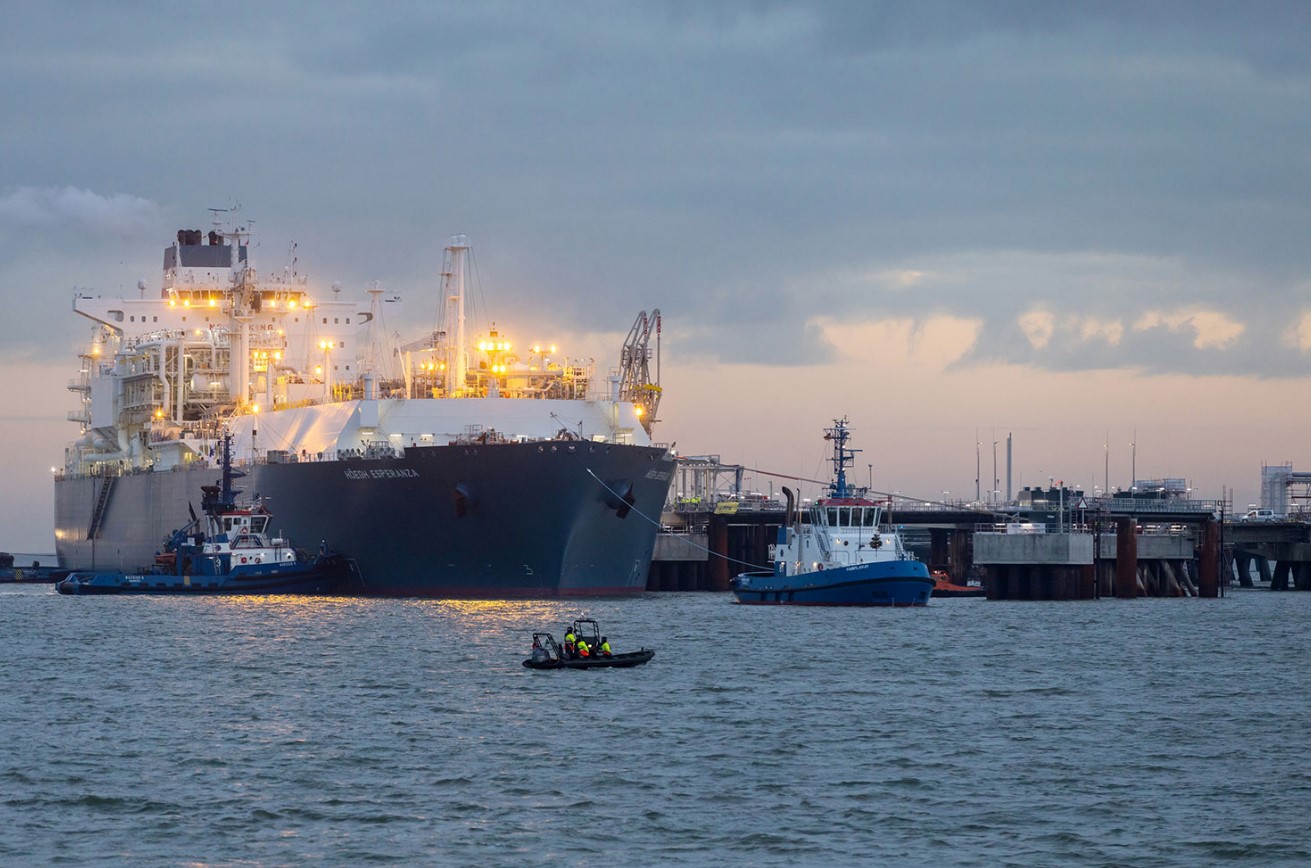Germany’s first FSRU-based import facility in Wilhelmshaven, operated by Uniper, has started supplying regasified LNG to the grid.
The 170,000-cbm FSRU Hoegh Esperanza arrived in Wilhelmshaven on December 15 while Uniper and its partners launched the facility two days later.
Uniper operates the facility on behalf of the German government, Niedersachsen Ports performed the works on the port infrastructure, such as the recently completed jetty, while OGE was responsible for the 26 kilometers long connecting pipeline.
The FSRU stated delivering regasified LNG to the pipeline on Wednesday, one day ahead than Uniper had originally planned, the energy firm said.
Prior to arriving in Wilhelmshaven, the FSRU took a cargo in Spain at the Saggas regasification plant in Sagunto operated by Enagas.
Uniper said the shipment of 165,000 cbm of LNG is enough to supply around 50-80,000 German households for a year.
In future, Hoegh Esperanza would feed at least five bcm of natural gas into the German gas grid each year.
That is around six percent of Germany’s gas demand, and would thus replace around eleven percent of Germany’s gas imports from Russia, Uniper said.
First LNG tanker to dock at the terminal in early January
Uniper expects the first LNG tanker to dock at the FSRU in early January.
The 2016-built 174,000-cbm LNG carrier, Maria Energy, owned by TEN and chartered by Uniper, is on its way to Wilhelmshaven and is expected to arrive there on January 2, according to its AIS data provided by VesselsValue.
Maria Energy previously loaded a cargo at Venture Global LNG’s Calcasieu Pass terminal in Cameron, Louisiana, the data shows.
LNG Prime contacted Uniper for a comment regarding the matter but we did not receive a reply by the time this article was published.
Six FSRU-based terminals
The Wilhelmshaven facility is the first of six FSRU-based terminal in Germany that are expected to go online by the end of 2023.
The government backed the charter of five FSRUs while Deutsche ReGas is developing the first private FSRU-based facility in Lubmin.
Hoegh LNG said earlier on December 15 it signed a binding 10-year time charter contract with the German government for the FSRU Hoegh Esperanza.
The FSRU will be operated by Uniper acting as agent on behalf of the German Federal Ministry for Economic Affairs and Climate Action.
German energy firm RWE is also expecting to receive the first commissioning cargo at the Elbhafen FSRU-based LNG import terminal in Brunsbuettel in January. This terminal will also feature Hoegh’s vessel, Hoegh Gannet.
In addition, Deutsche ReGas last week moved the the 2009-built 145,000-cbm FSRU Neptune from the Mukran Port on the island of Ruegen to Lubmin while it welcomed the FSU as well.
Deutsche ReGas said in a statement on Thursday it had received approval from the European Commission for exemption from regulation for the new floating LNG terminal.
However, the company is still awaiting to receive approval by the local government to launch the facility.
Depending on this, the Lubmin facility would become the second operational terminal in Germany, followed by the Brunsbuettel facility.
The three other FSRU-terminals are expected to go online later in 2023.

